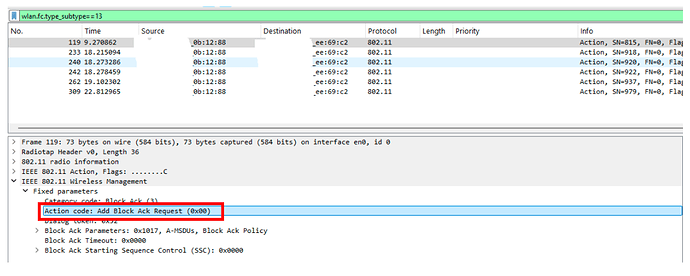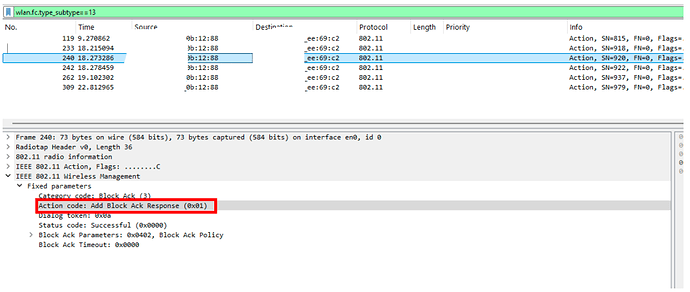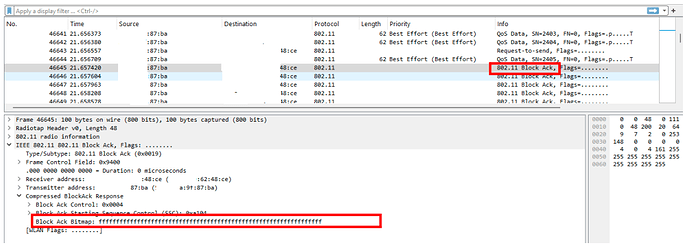![]() What Is Block Acknowledgment (Block ACK)?
What Is Block Acknowledgment (Block ACK)?
Imagine sending 10 packages through the mail and getting 10 separate delivery receipts—tedious, right? With Block ACK, Wi-Fi bundles acknowledgments for a whole batch of frames into one “block” ACK, slashing control-frame overhead and supercharging throughput. ![]()
![]() Evolution in Wi-Fi Standards
Evolution in Wi-Fi Standards
-
802.11e (2005): Introduced Block ACK as an optional QoS enhancement.
-
802.11n (2009): Made Block ACK mandatory for all HT (High-Throughput) devices and added Compressed & Multi-TID variants.
-
802.11ax/11be: Further refined HE Block ACK for better efficiency in OFDMA and Multi-Link Operation.
![]() How It Works: Message Flow
How It Works: Message Flow
- ADDBA Exchange
ADDBA Request: Initiator checks peer’s Block ACK capability, negotiates
buffer size & policy.
ADDBA Response: Responder accepts, establishing the Block ACK session.
-
Burst Transmission
Transmitter sends multiple QoS-tagged MPDUs back-to-back within a TXOP
or via EDCA. -
BLOCKACKREQ → BLOCKACK
Transmitter sends a BlockAckReq.
Receiver returns a bitmap marking which frames arrived intact. -
Selective Retransmissions
Only missing MPDUs are resent—no per-frame ACK overhead. -
DELBA Teardown
DELBA frames release session resources when traffic ends or on timeout.
![]() Why It Matters: Impact & Benefits
Why It Matters: Impact & Benefits
- Fewer Control Frames → Up to 60–70% reduction in ACK traffic
- Lower Latency → Less contention in crowded RF environments
- Higher Throughput → Ideal for video, AR/VR, large file transfers & bursty IoT
![]() Real-World Use Cases
Real-World Use Cases
-
Live Video Surveillance: Consolidated ACKs minimize retransmission delays.
-
AR/VR Experiences: Keeps MAC overhead low to maintain sub-20 ms latency.
-
Bulk File Transfers: Large data blocks traverse the network with fewer handshakes.
-
Industrial IoT: Periodic sensor bursts preserve airtime & device battery life.
![]() Additional Insights & Best Practices
Additional Insights & Best Practices
-
Tune Block Size & Timeout: Larger buffers boost efficiency but require more memory—find the sweet spot.
-
Use Compressed Block ACK: Saves airtime by sending only the necessary bitmap bits.
-
Leverage Multi-TID Sessions: Aggregate traffic from multiple priorities (voice, video, data) in one stream.
-
Monitor Error Rates: In very lossy links, too-large blocks can lead to retransmission storms—scale block sizes down.
-
Explore HE Enhancements: In 802.11ax/be, Block ACK pairs beautifully with OFDMA & Multi-Link to maximize channel utilization.
See It in Action
I’ll be sharing wireless sniffer logs (Wireshark captures).
Add Block Ack Request
Add Block Ack Response
Block Ack
LinkedIn: ![]()


